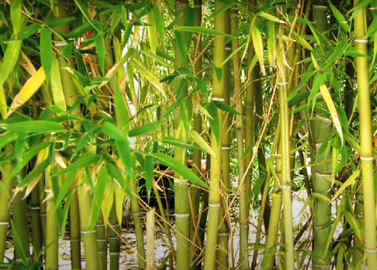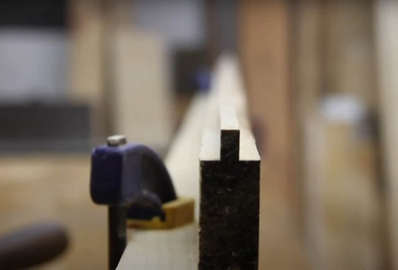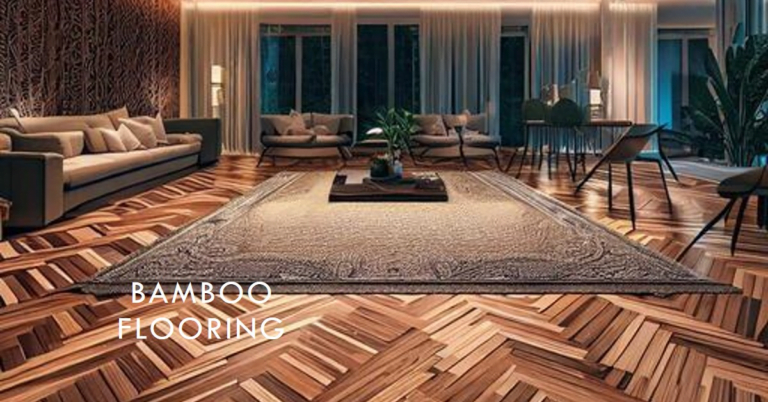Bamboo flooring problems: How to fix them?
Despite bamboo being an environment-friendly flooring option that is affordable and growing in popularity, it still has some issues that may put doubts on some potential users.

Here are some common problems with bamboo flooring that are due to its manufacturing process, installation, and maintenance.
1. Bamboo is susceptible to moisture and humidity issues
Pertaining to wood plank flooring, bamboo is not immune to water damage. Like other types of flooring, it is susceptible to the growth of mold and mildew from moisture which will eventually cause the growth of microbial menaces.
Achieving the desired appearance and function of bamboo flooring requires a commitment to maintaining the required humidity levels. It is a quality flooring product in terms of the feel and appearance of bamboo, but it must be properly maintained to function at its best.
You should never use bamboo flooring in areas with excessive water such as the bathroom or outdoor patios.
How to fix:
Similar to other types of flooring, choosing the correct finish for your bamboo floor is important. For instance, the same finish used on a hardwood floor would not be as durable for bamboo. In fact, some finishes are available that won’t require re-coating for five years or more; however, this is not an absolute recommendation in all cases. For instance, you might need a more durable finish that will last longer if your home is especially humid or wet.
It is also essential to make sure the subfloor is dry before installing the bamboo flooring. Do not allow water to sit on your bamboo table and make sure to wipe away any spills immediately.
2. Bamboo is prone to scratches, dents, and stains
The hardness of bamboo flooring varies, the harder the bamboo, the fewer the dents, scratches, and stains.
With the process of darkening the appearance, the carbonized bamboo becomes a softwood that’s made by burning in a low-temperature process. This type of bamboo is prone to scratching and denting. Dirt and dust, once accumulated and not cleaned, will eventually scratch or dent the bamboo floors especially in areas with high-traffic use.
Light-colored bamboo is better than carbonized bamboo as it will withstand the damage and often the scratches are not nearly as visible.
How to fix:
When it comes to these types of damage, keeping the bamboo flooring free from dust, dirt, foreign debris, and other things that may cause scratches and dents is of utmost importance. For pet lovers, careless dragging of untrimmed pet nails or un-padded furniture must be avoided.
You should use felt protector pads under heavy furniture so they don’t dent the bamboo flooring. Make sure to be careful when moving heavy objects and never drag them across the floor, instead always lift things up and place them down gently.
3. Bamboo lacks an international standard rating
Bamboo is a popular flooring material because it’s naturally durable and sustainable, but it lacks international rating and standardization when it comes to its manufacturing process especially when the majority of it comes from Southeast Asia, where poor standard practices may sometimes be overlooked.
Certain low-quality bamboo products uses formaldehyde-based glues and finishes which contain high levels of toxic substances such as VOCs (volatile organic chemicals) that can release into the air over a period of time.
How to fix:
Choose regulated manufacturers that follow a set of standards and use small amounts of VOCs that will not pose a health and environmental hazard. Certification from the Forest Stewardship Council is something you should check when choosing a manufacturer of bamboo flooring.
4. Bamboo requires cleaning considerations
Bamboo flooring is low maintenance. It can be cleaned using a vacuum cleaner or a broom to remove dust and dirt. But there are special precautions when it comes to cleaning a bamboo floor.
When cleaning a sticky surface of bamboo flooring, you cannot use a wet mop or any abrasive chemicals as this can leave a stain, unsightly marks, and other long-term damage.
How to fix:
Buy a vacuum if you don’t want to spend a lot of time sweeping the floors. Instead of a wet mop, make sure to use a damp mop as you wipe out any spills if you want to avoid a cloudy haze in your bamboo flooring. Use recommended cleaners for bamboo when you want to get rid of black and white stains.
5. Bamboo flooring can fade
One of the common issues with bamboo flooring is its propensity to fade, especially when exposed to heat or when cleaned with abrasive chemicals. Bamboo floors gradually fade in color with prolonged exposure to sunlight which makes it a poor choice for any outdoor flooring.
How to fix:
Do not use bamboo flooring where it may be exposed to sunlight for longer periods. When purchasing bamboo flooring planks make sure to select those with UV protection especially when you have areas indoor that are often exposed to the sunlight. You can also protect your bamboo floors with dark curtains when the sun is at its peak, or simply throw a rug to cover it.
Is Bamboo a good flooring option?
Bamboo does have a few disadvantages such as it being susceptible to moisture and humidity issues, scratches, dents, stains, and fading in color.
However, it has many benefits as well. It is an eco-friendly option, durable, with aesthetic appeal, and is made from fast-growing grass which makes a renewable resource. Bamboo flooring can last up to 30 years when installed properly and cared for properly. It’s your decision whether the strand bamboo flooring problems outweigh its benefits for you.

